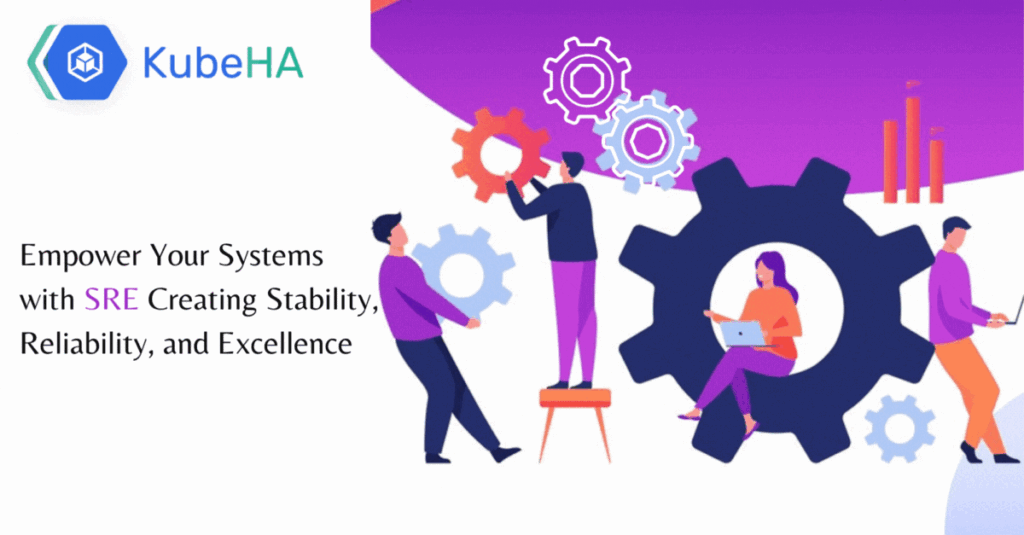
Ensuring the stability, reliability, and excellence of systems is paramount. This is where Site Reliability Engineering (SRE) comes into play. SRE is a discipline that combines software engineering and systems administration to create scalable and reliable software systems. In this blog post, we’ll explore how embracing SRE principles can empower your systems and elevate your organization to new heights of success.
SRE
At its core, SRE is about applying software engineering principles to operations tasks. It aims to create scalable and reliable systems through automation, monitoring, and iterative improvements. By treating operations as if it were a software problem, SRE enables organizations to build resilient systems that can withstand failures and adapt to changing demands.
Key Principles of SRE
Service Level Objectives (SLOs): SRE emphasizes the importance of defining clear SLOs that align with the needs of users and the business. These objectives serve as the foundation for measuring system performance and reliability, helping teams prioritize efforts and allocate resources effectively.
Automation: Automation is central to SRE, enabling teams to streamline repetitive tasks, reduce manual errors, and increase efficiency. By automating processes such as deployment, scaling, and recovery, organizations can accelerate their development cycles and improve system resilience.
Monitoring and Alerting: SRE advocates for comprehensive monitoring and alerting systems that provide real-time visibility into system health and performance. By proactively detecting issues and responding swiftly, teams can minimize downtime and ensure a seamless user experience.
Blameless Culture: In a blameless culture, the focus shifts from assigning blame for failures to learning from them and improving processes. SRE encourages a blameless approach to post-incident reviews, fostering a culture of collaboration, innovation, and continuous improvement.
Capacity Planning: SRE emphasizes the importance of capacity planning to anticipate and accommodate future growth. By analyzing historical data and forecasting future trends, organizations can scale their infrastructure proactively and avoid performance bottlenecks.
Benefits of SRE
Embracing SRE can yield a wide range of benefits for organizations, including:
Improved Reliability: SRE practices help minimize downtime and service disruptions, enhancing the reliability of systems and ensuring a consistent user experience.
Increased Efficiency: Automation and streamlined processes enable teams to work more efficiently, freeing up time to focus on innovation and strategic initiatives.
Faster Time to Market: By automating deployment and testing processes, SRE accelerates the software development lifecycle, allowing organizations to deliver new features and updates to market more quickly.
Enhanced Scalability: SRE enables organizations to scale their systems seamlessly to meet growing demand, without sacrificing performance or reliability.
Getting Started with SRE
Implementing SRE within your organization requires a combination of technical expertise, cultural change, and organizational buy-in. Here are some steps to help you get started:
Educate Your Team: Ensure that your team understands the principles and practices of SRE and the benefits it can bring to your organization.
Define Clear Objectives: Establish clear SLOs and service level agreements (SLAs) that align with the needs of your users and business stakeholders.
Invest in Automation: Identify opportunities to automate repetitive tasks and streamline processes to improve efficiency and reliability.
Foster a Blameless Culture: Encourage open communication, collaboration, and a blameless approach to failure within your organization.
Monitor and Iterate: Continuously monitor system performance, gather feedback, and iterate on processes to drive continuous improvement.
Site Reliability Engineering (SRE) offers a powerful framework for creating stability, reliability, and excellence in your systems. By embracing SRE principles and practices, organizations can elevate their operational capabilities, drive innovation, and deliver exceptional user experiences in today’s dynamic digital landscape. Follow KubeHA Linkedin Page KubeHA